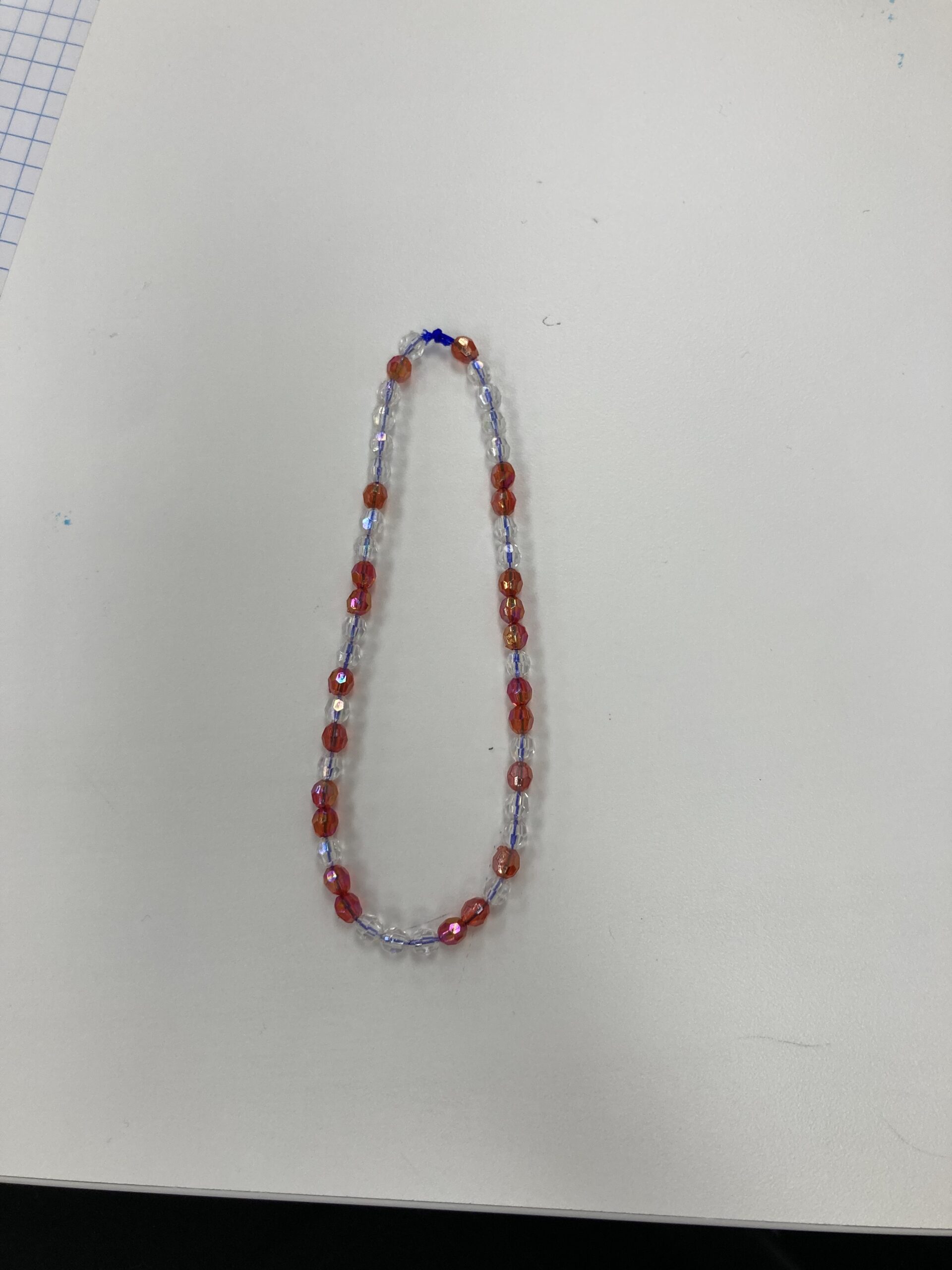

Beaded Tweets
Today we had a very nice presentation on “Beaded Tweets,” by Noelle Pepin. We were given a presentation on what the beads mean, how to use the coding sheet to create letters and words, and how to build necklaces and bracelets with string and beads. I found it interesting how she linked creating these bracelets and necklaces with her Indigenous pedagogy. We were given the opportunity to create our own necklace and/or bracelet, and I made a nice little bracelet and wrote my partner’s name with it, with the help of the coding sheet. It was a enjoyable exercise, which I would highly recommend in a classroom setting.
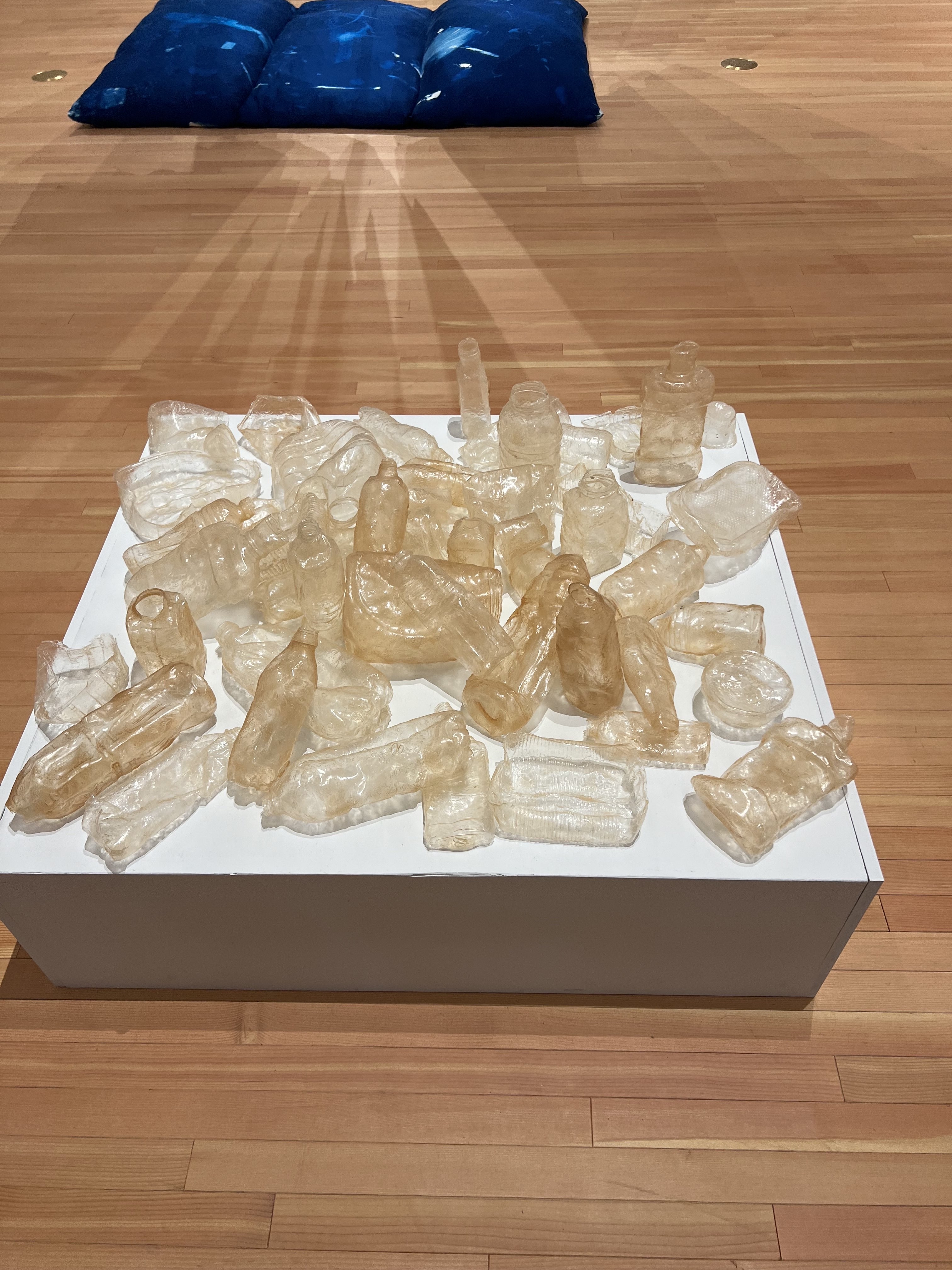
Two Rivers Art Gallery
Today we visited the Two Rivers Art Gallery. We started off with a quick introduction and headed into the first portion of the art gallery. The first section of the art gallery featured art that emphasized the relationship between the earth and pollution, plastic, and other forms of garbage that has gone into the earth’s landfills and oceans. We were given the opportunity to walk around amongst ourselves and discuss the art before our tour guide Sophia gave us a bit of information about the art and its meaning.
The second section of the art gallery featured the relationship between human beings, industrialization, and climate change with the natural world. Again, we walked amongst the art exhibits and, before getting the opportunity to sit with one piece of art and really try and analyze the meaning behind it. After some open discussion about the art, we headed upstairs to work on our own art. There, I created a tree from clay.
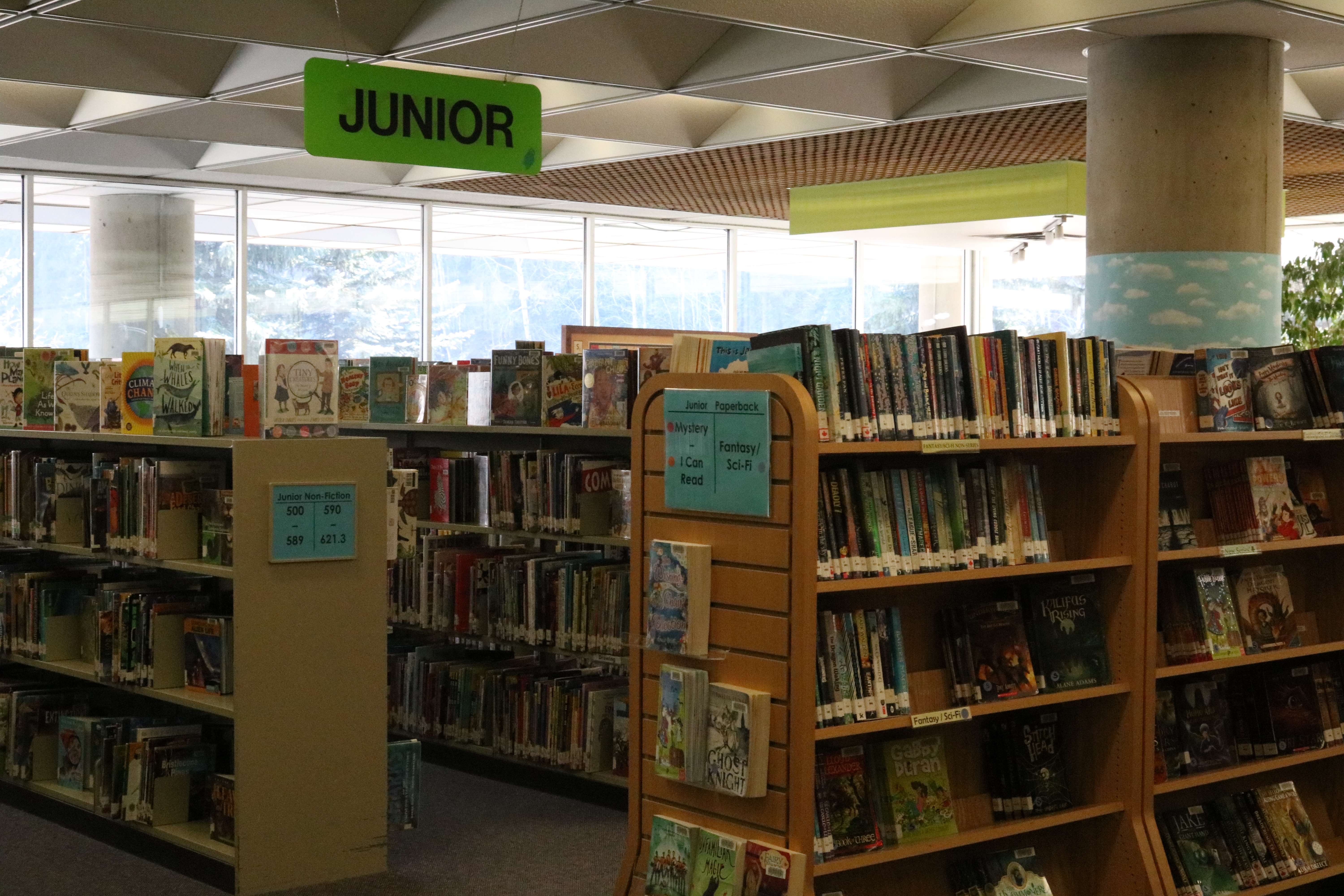
Prince George Public Library
Today we as a class visited the Prince George Public Library. We began with a Land Acknowledgement and learned about some of the ins and outs of the library. We learned about all the different resources that the library has to offer, and how we can use them as part of our lesson planning. The PGPL has many books, including “talking books” which can be used as sources, as well as kits which can be used to teach lessons. There are book options for all ages at the library, including fiction, non-fiction, and educational textbooks. There are also many cultural and technological resources to be accessed at the PGGL. All of these sources can be used to create lesson plans, and bringing a class to the library to learn about it can be a lesson in itself.
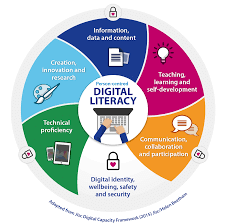

Digital Literacy
Digital Literacy is defined as “the interest, attitude, and ability of individuals to appropriately use digital technology and communication. Tools to access, manage, integrate, analyze, and evaluate information, construct new knowledge, create, and communicate with others” on the Government of BC website. It is important to understand Digital Literacy as a teacher, a student, or in any walk of life. We live in a world that relies heavily on technology. We are constantly on the internet, using our phones and computers, and other technology to help us learn, communicate, and help make our lives easier. As teachers, we will also be using technology on a regular basis, so it is important to be as proficient as we can be with technology. We will be communicating with many different parents on a regular basis, mostly through email communication, so it is important to understand how to use your email to communicate with parents and other staff effectively.
Understanding digital literacy is important because technology can be incorporated into lessons to make them easier for a teacher and help create an effective learning experience for a student. Students are more engaged when technology is involved in their learning because it is already a part of their everyday lives. Students can use technology to help them with schoolwork and create collaborative opportunities with fellow classmates that they may not otherwise be able to do without access to technology. Understanding digital literacy will help student improve their skills on regard to identifying what good information looks like and what is misinformation looks like on the Internet. Technology can provide students to a wide variety of sources and learning resources. Technology can be used to differentiate learning, by creating content such as slide shows, videos, and blog posts rather than traditional forms of schoolwork, such as essays and worksheets. These types of projects help students get creative. Students can also use technology to keep up with schoolwork, or even attend class, when they are too sick to physically come to school. It is important for students to understand digital literacy not just in school, but once they graduate school and go into post-secondary studies, or into the workforce. Technology is used in basically every type of job, so building digital literacy skills during school will help students prepare for their jobs and careers. Students understanding digital literacy will help them learn about online safety. In a world where there are many online treats to one’s privacy and data, learning about digital literacy at a young age can help protect them from online security and privacy issues. These are all reasons why it is important for educators to teach digital literacy in schools. It will keep students engaged in class, teach them skills that they will take further into their lives, and give them the skills to help them keep up with further technological advances.
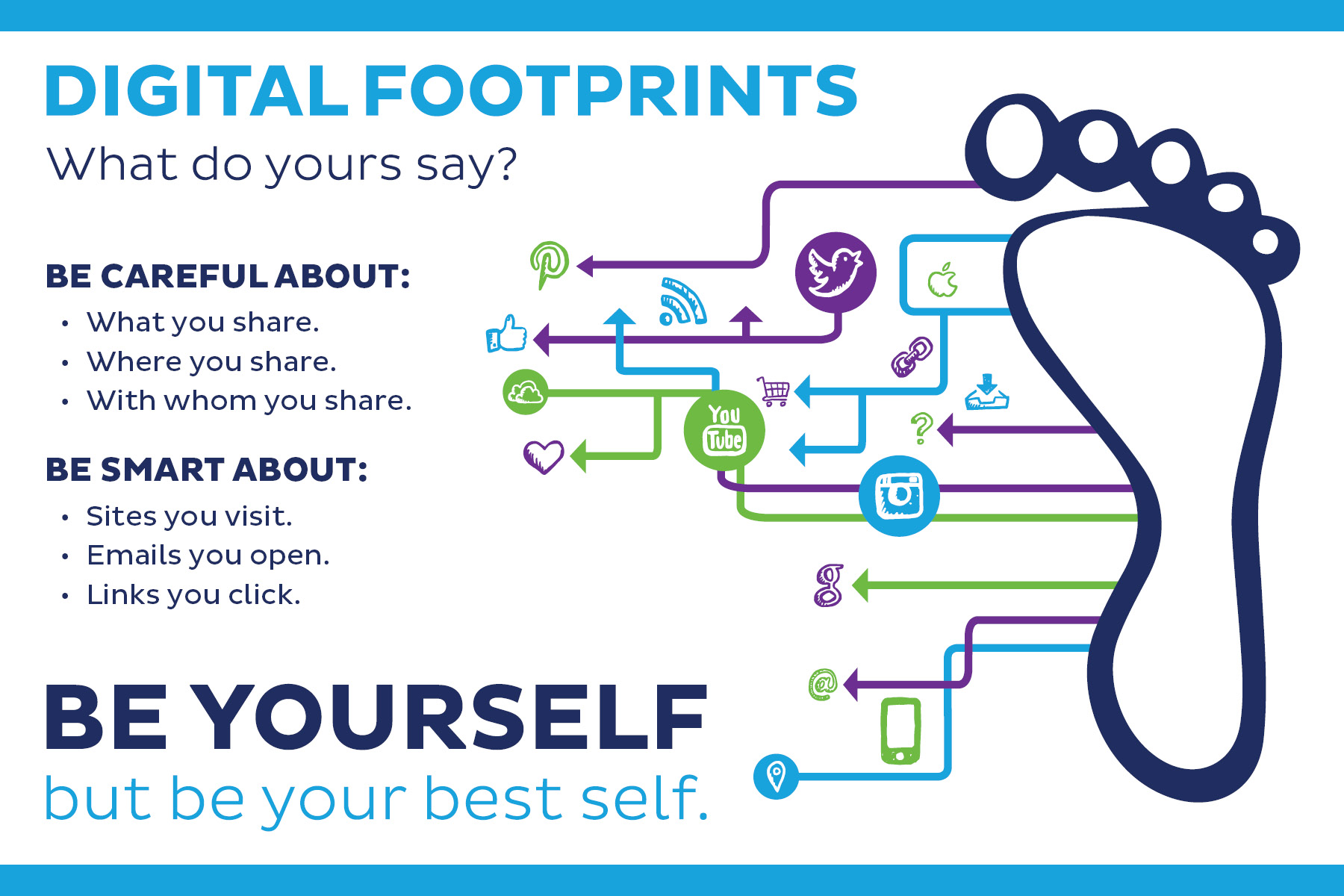
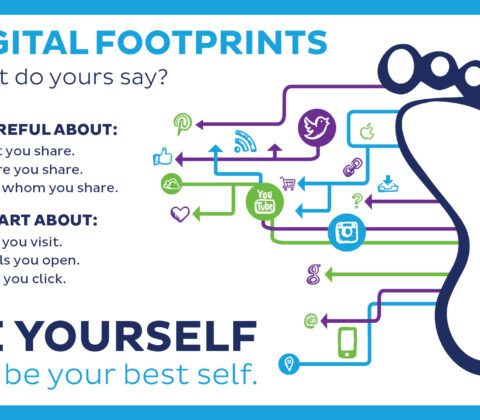
Digital Footprint
A Digital Footprint is defined on the Government of Canada website as “a train of data you create while using the Internet.” Anything and everything that one does on the Internet leaves a digital footprint, and a Digital Footprint will be on the Internet forever. Even things that can be deleted from the Internet can always be recovered, so it is important to be careful with what you are doing online. This includes emails, social media, and even simple website searches. Your digital footprint can be both intentional and unintentional. It is important to be careful with how you use the Internet, and what information you are giving up online. Putting personal and sensitive information on the Internet can lead to cyber threats can leave your sensitive information, such as banking or personal information, vulnerable to hackers. Some things that people can do to protect themselves is simply to be careful with what you put online and use antivirus on your computer. It is important to understand what a Digital Footprint is and why it matters as a teacher and as a learner.
As teachers, it is important to know what is acceptable to put on the internet and what isn’t. I once heard somebody tell me that if you wouldn’t put it up in your classroom, you shouldn’t put it on the internet. Many of the parents of the students we will teach will look up teachers of their kids, so it is important that what they find about us is professional and positive. If something negative is found when a parent Googles a teacher, the teacher’s reputation will be damaged. It is also important for teachers to have a good Digital Footprint because teachers have influences on their students. If a student finds a bad or controversial social media post made by a teacher, the message that is being sent is that it is acceptable for a student to also create bad or controversial social media posts. Having a clean Digital Footprint will encourage and teach students to do the same. It is also important as teachers to have a clean Digital Footprint when looking for work, and this actually applies to anybody looking for work, not just teachers. Employers will always look up a potential employee when looking to potentially hire them, so if an employer sees something online that they do not like, it will negatively affect their chances of being hired.
Teachers can, and do, lose their jobs due to what they are posting on social media. One Google search of “teacher fired over social media post” led me to dozens of articles of teachers losing their jobs due to something they posted online. This is why it is crucial for teachers to be careful of what they are posting online. It can affect a teacher’s life and career negatively for the rest of their life.
https://www.cyber.gc.ca/en/guidance/digital-footprint-itsap00133
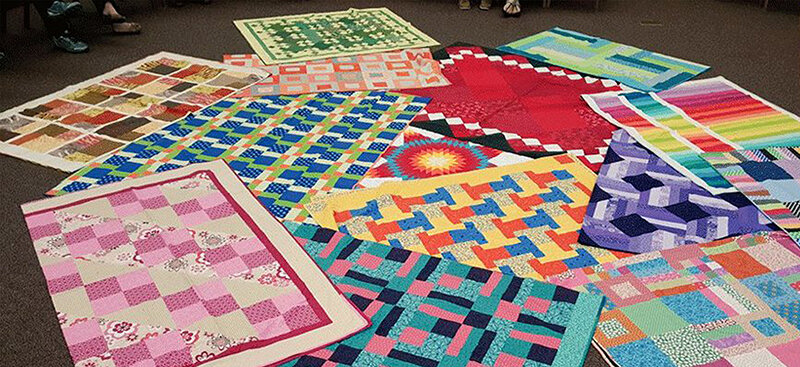

Blanket Exercise
Today I participated in the blanket exercise for the first time. For me, this was a new and unique way for me to learn about European colonization in modern day Canada. This exercise was designed by KAIROS Canada, and is an interactive experience in which all of the participants’ get involved. I did not fully know what this exercise was, but once we began, I quickly saw the message that it was trying to get across. It started as a narrative in which all of my classmates stood on several laid-out blankets (which represented the land that belongs to the Indigenous People), and this narrative began at the beginning of colonialism. My classmates and I all represented different Indigenous Peoples of Canada, and as the narrative went on, more and more of us had to sit down, were separated, or were forced to fold our blankets inwards. This represented Indigenous People being killed and displaced by a variety of factors tied into colonialism. I studied History in my Undergrad, so I have a good knowledge about the history of colonialism in Canada, but this exercise put it into a different perspective for me. Seeing the visual of half of my classmates having to leave the blankets because they were “killed off” by European diseases, for example, really put into perspective the proportions of Indigenous People being killed or displaced by colonialism. This exercise is a very good way of showcasing Canada’s dark past.
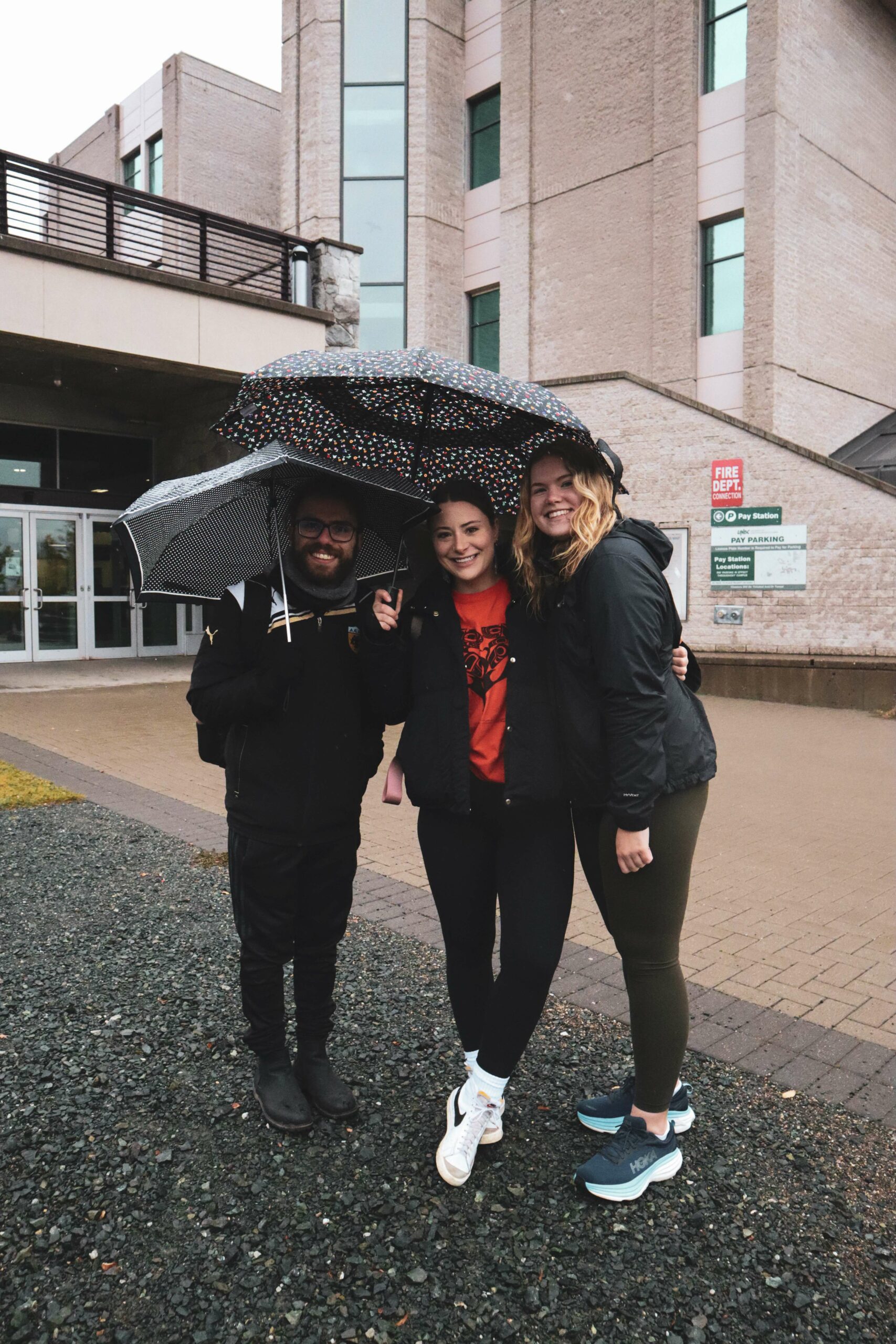
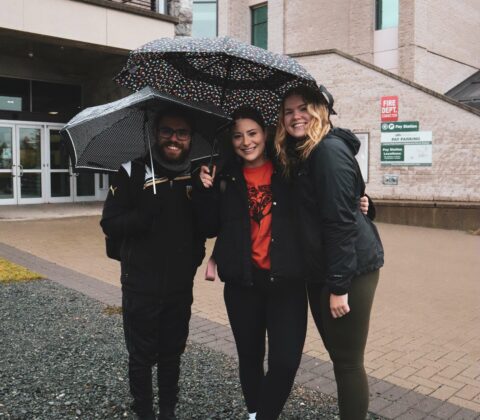
Ceremonial Fire Circle
In honour of National Truth and Reconciliation, we gathered around the fire circle in from of UNBC at 8:30 AM with our orange shirts. During the first part of the morning, our guest speaker spoke for a while and passed on some words of wisdom and shared some of his personal stories. Afterwards, we went around the circle, with each one of us saying one thing that we would do to practice self-care. Mine was to enjoy my university experience while I am still here, and ensure that I am getting a full eight hours of sleep as often as I can. We took a short break to warm up (as it was quite cold and rainy), and returned afterwards. The UHNBC drummers welcomed and sang for us. Many of us were given drums and encouraged to join in the drumming (I was lucky and honoured to able able to drum on a few songs). We sang and drummed for about an hour, and it was a very enjoyable and enlightening experience, despite the cold and rainy weather. I live close to the hospital where the UHNBC drummers drum on Monday nights, I’d like to take the opportunity to join them again, as it was lovely to see and participate in.
Hello world!
Welcome to OpenETC WordPress. This is your first post. Edit or delete it, then start blogging!
Niigaan Sinclair Pro-D Day Keynote
Today we attended a Pro-D Day Keynote, presented by Niigaan Sinclair. This keynote touched on a few different topics and Indigenous issues and related them to the education system. He discussed multiculturalism, and the importance of embracing it. Despite not being Indigenous, I can still embrace and accept Indigenous culture. That is what Indigenous education is all about. He talked about the importance of children having a father figure in their lives, and how absent fathers are the worst possible thing for a family dynamic. He also talked about residential schools, their impacts, and how they cut off young Indigenous peoples from their traditional roots, such as language. Young Indigenous people need to learn to reconnect with their traditional roots. He also talks about how we need to respect the place in which we are, and how knowledge can come from the land and not just teachers. As a teacher, it is important to build relationships with your students, and make sure all students feel welcome and heard. It’s also the responsibility of the teacher to ensure create employability amongst the students, who can work in a wide variety of environments.